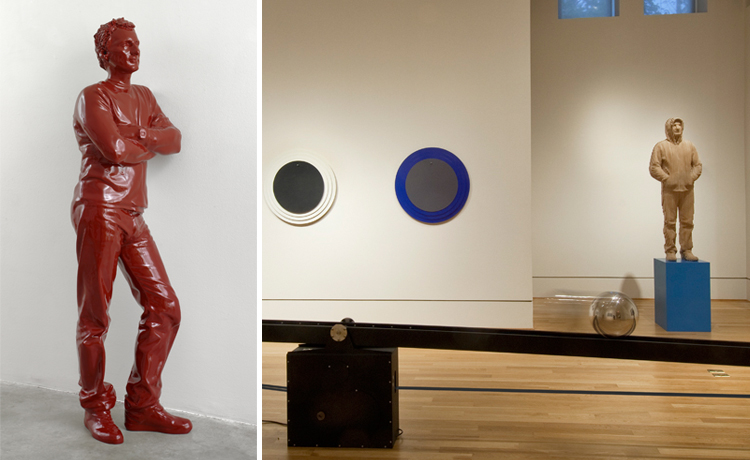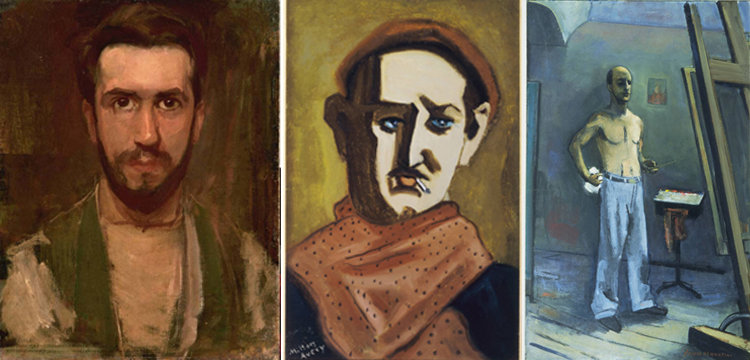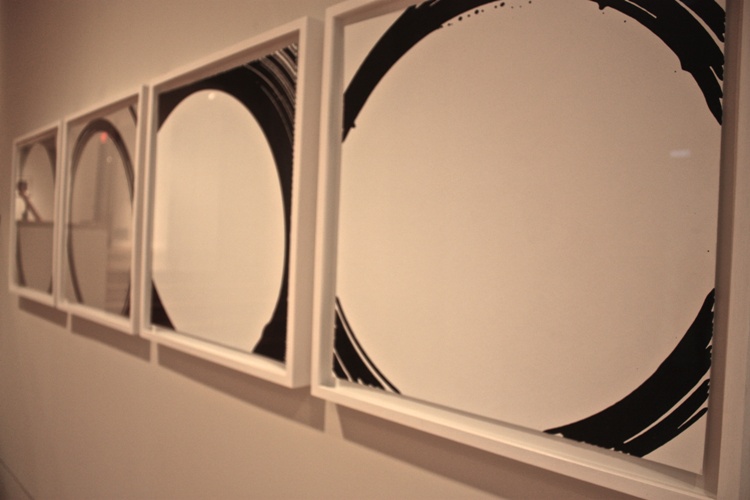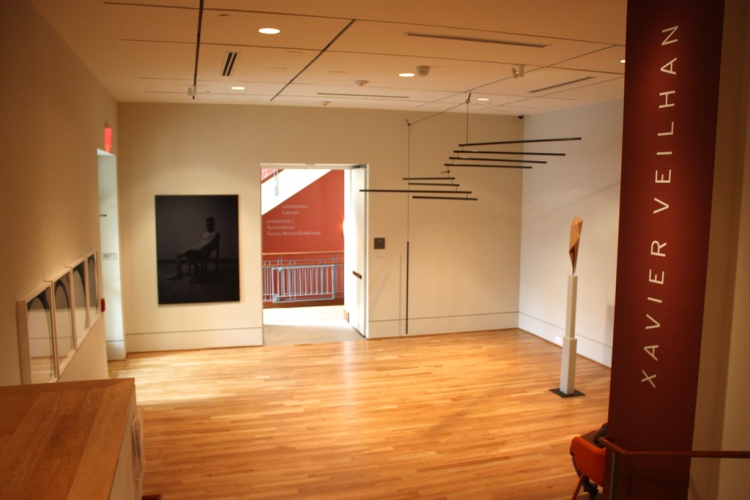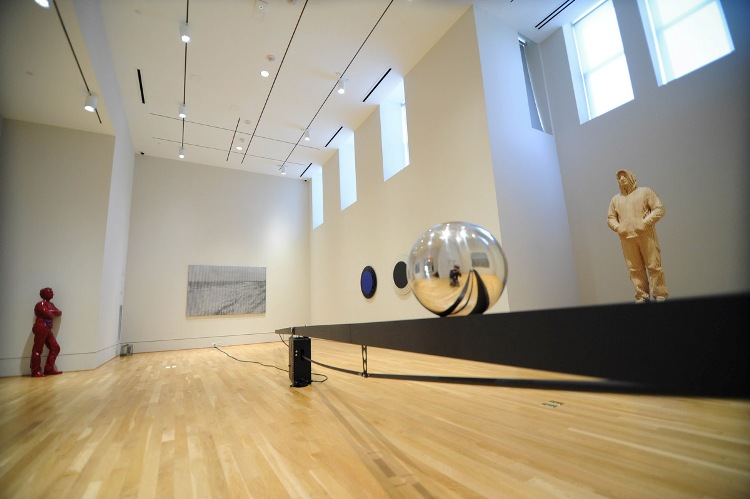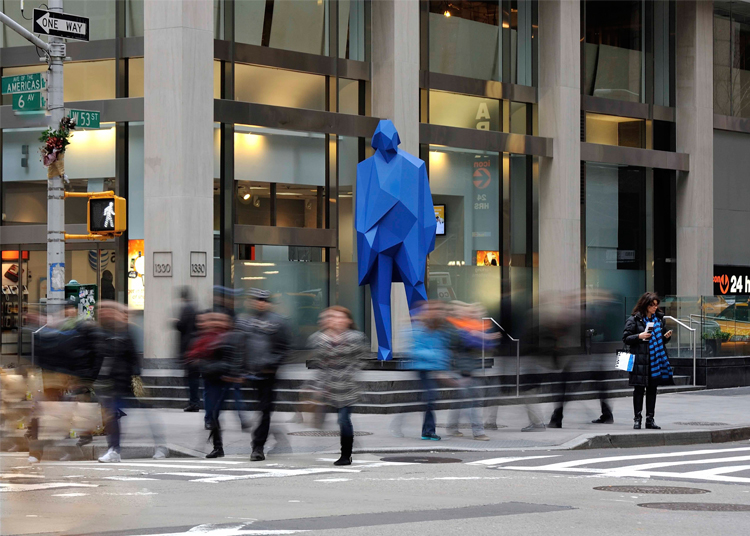
Xavier Veilhan, Jean-Marc, 2012. Acier inoxydable, peinture polyurethane / Stainless steel, polyurethane paint; 400 x 141 x 108 cm / 157 ½ x 55 ½ x 42 ½ in. Courtesy Andréhn-Schiptjenko, Stockholm. Photo ©Stephen Smith; © Veilhan / ADAGP, Paris, 2012 & ARS, New York, 2012 .
Earlier this month, Xavier Veilhan installed Jean-Marc, his first permanent public sculpture in the U.S., a stone’s throw away from MoMA on the corner of 53rd Street and Sixth Ave. in New York City. Photos of the installation are up on the artist’s website. On a trip to attend the opening of Wolfgang Laib’s Pollen from Hazelnut at MoMA, Phillips Director Dorothy Kosinski passed the giant blue sculpture and immediately noted “there seems to be a nice artistic symmetry between 53rd Street NYC and Q & 21st in D.C.” The sharp edges and larger-than-life quality of the sculpture do indeed bear a striking resemblance to Veilhan’s The Bear outside the Phillips.
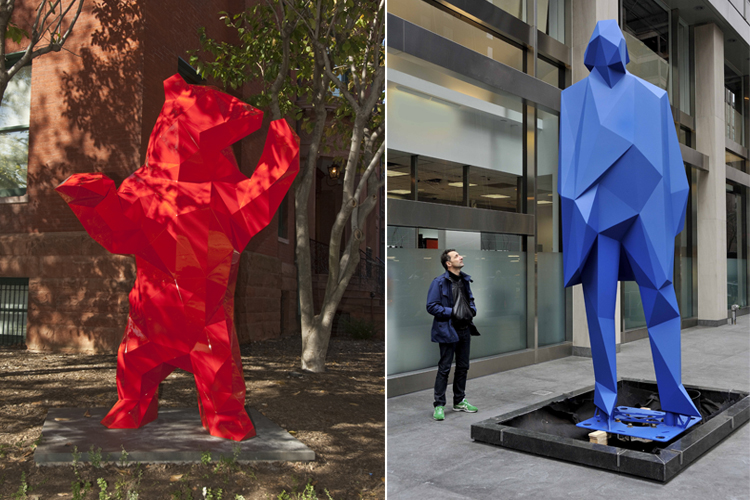
(Left) Xavier Veilhan, The Bear, 2010. Painted polyurethane resin, 106 ¼ x 69 ¼ x 53 3/8 in. Private collection, USA. Courtesy Galerie Perrotin, Hong Kong and Paris. Installation view, 2012, The Phillips Collection Photo © Lee Stalsworth © 2012 Veilhan / ADAGP, Paris, and ARS, New York. (Right) Xavier Veilhan, Jean-Marc, 2012. Acier inoxydable, peinture polyurethane / Stainless steel, polyurethane paint; 400 x 141 x 108 cm / 157 ½ x 55 ½ x 42 ½ in. Courtesy Andréhn-Schiptjenko, Stockholm. Photo © Stephen Smith; © Veilhan / ADAGP, Paris, 2012

